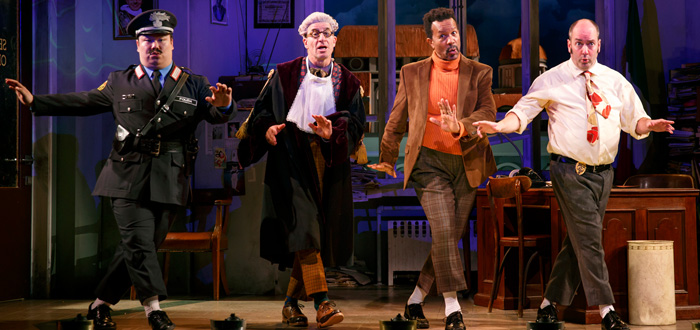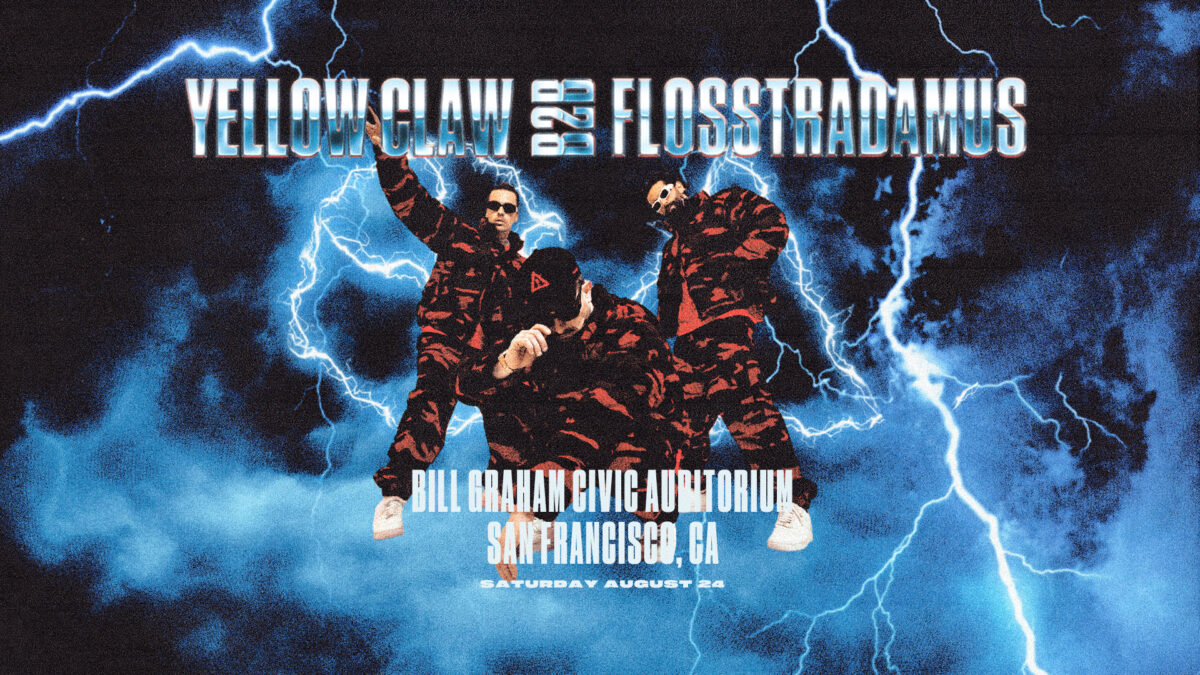Stage Review: Accidental Death of an Anarchist at Berkeley Rep

Accidental Death of Anarchist, playing at the Berkeley Repertory Theater through April 20, is a contemporary reworking of Dario Fo’s controversial farce; adapted by Gavin Richards and directed by Christopher Bayes.
This high-energy comedy is based on the actual death of Giuseppe Pinelli, which occurred in Italy in 1969. During that December, bombs were detonated in Milan and Rome. The police began rounding up suspects from the far left, including Pinelli, a railroad worker and known anarchist. After three days of interrogation, Pinelli mysteriously fell to his death out of the fourth story window of police headquarters. Though the implications of these circumstances are obvious, his death was ultimately decided to be of “accidental” causes and the three police officers present at the interrogation were acquitted. Struck by this situation, Dario Fo, a revolutionary leftist and playwright, penned Accidental Death of an Anarchist, which revolves around the investigation of the three officers, and strives to be as absurd as the case that inspired it.
In the Rep’s debut of Fo’s classic, we follow the character known only as the Maniac (impeccably played by Rep regular Steven Epp) as he impersonates a judge in order to pretend at aiding the three officers in forging an airtight cover up, in order to hide their murder of the anarchist. From there, the Maniac continually outwits the generally blundering police force in a series of events that involve absurdly amusing over-exaggeration, slapstick physical comedy, and madcap musical numbers.
Steven Epp’s Maniac is the standout performance of the show. He brings a manic energy to the role that is enchanting and hilarious. His spastic movements and outbursts never fail to amuse as he impersonate the judge, breaking out in child-like glee whenever he gets a chance to put on another charade. My favorite is the mid-show change from imitating the judge to becoming the eye-patch wearing, fake leg having, questionably German forensics expert, who he plays like a spot on impression of Peter Sellers in Dr. Strangelove. While Epp is the glue that holds the show together, all actors involved must be given their due. Each part was played remarkably well, and the choreography of their physicality was well timed and synchronized. Particular mention is necessary for the two-man band, which scored the performance with live music utilizing a variety of instruments, including accordion, piano, and drums.
The staging was of some interest, as there was only one set that functioned as both the first and fourth floor of the police station via illustration of movement up stairs by an elevator super-imposed on the set through creative lighting. The set itself was reminiscent of the one-stage sets used on sitcoms filmed in front of live studio audiences.
One of the most compelling elements of the play was the upturning of the central conceit of traditional theater; the static and unseen audience, which watches real characters going through the actual events of their lives. In this, the characters are directly aware of the audience’s presence and often speak to them directly. On multiple occasions, a miss-timed slapstick sound-effect was dismissed by the actor as, “opening night jitters.” At one moment, after a particularly out of character monologue, one actor announces, “This isn’t Dario Fo.” This ridiculous flouting of theatrical convention adds to the absurdity of the show. The characters all know that they are characters in a show being watched by an audience, which has a writer. There is even a moment where every actor breaks character to discuss the disparities implicit in their role in the show, “Why is there only one female role?” for instance.
What makes this adaptation unique is the way in which the work was updated to reflect more modern concerns. The play revolves around a government dealing in lies and cover-ups in order to manipulate its people. The parallels between this situation and much that is happening in modern America should be obvious. Throughout the show references are added to indicate the awareness that these problems are still very relevant today, building to a diatribe talking directly about the problems with our democracy and the ways that the government manipulates opinion that could have been lifted straight out of Chomsky’s Manufacturing Consent.
When the play brings to light issues that are of very real concern today, it is very on point and relevant. However, another element of the updated script was the addition of a number of cheap pop culture references, which are my only complaint with the performance. They seem tacked on in an attempt to elicit easy laughs, but I found them to be generally unnecessary, often missing their mark.
Barring this one complaint, the show has a great energy, is a lot of fun and is absolutely hilarious.








I was disappointed with the Berkeley Rep’s play, given the recent (2013 at Palms Springs Int’l Film Festival) Italian film, Piazza Fontana: The Italian Conspiracy is a kind of benchmark for fans of file and theater. The play by Berkeley Repetory Theater does not tell us that the bomb exploded at the piazza Fontana branch of the Banca Nazionale dell’Agricoltura in Milan on December 12, 1969, causing 14 deaths in Milan and wounding of 88 more people, by anarchists or the secret police.
‘Police Commissioner Luigi Calabresi (Valerio Mastandrea) sets about rounding up known anarchists, including non-violent protester Giuseppe Pinelli (an impressive Pierfrancesco Favino) who Calabresi has developed a grudging respect for. With his superiors pressing to secure a connection to the anarchist group, Pinelli is detained beyond the legal time limit and deprived of food and sleep = then on the night of December 13 he plummets to his death from Calabresi’s office window.’
The slapstick was insulting to . . .